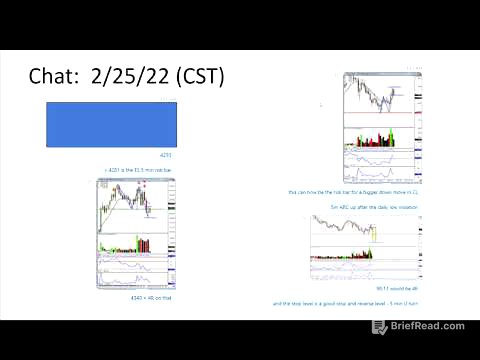TLDR;
This video explores the capabilities of ChatGPT 5 as a super AI assistant, highlighting its consolidated models, improved writing, and real-world applications. It details five workflows: research, content creation, data analysis, automation, and landing page building, demonstrating how ChatGPT 5 can enhance productivity and streamline various tasks. The video also addresses the limitations of ChatGPT 5, such as hallucination and coding consistency, while offering practical tips and solutions.
- ChatGPT 5 consolidates models and improves writing capabilities.
- Real-world workflows include research, content creation, data analysis, automation, and landing page building.
- Limitations include hallucination and coding consistency.
My First Impression [0:22]
ChatGPT 5 consolidates different models into two core models: a basic GPT5 model and a thinking model, utilizing a unified reasoning system with an internal router. The system automatically triggers thinking mode based on task complexity, but users can manually select it or use the "Think Longer" option for complex tasks. The writing capability of ChatGPT 5 is more natural compared to GPT-4, using less AI-generated wording and fluff, and the response speed is significantly faster when thinking mode is off.
Research Workflow [1:32]
The research workflow uses ChatGPT 5's project features to retrieve business context and transform it into shareable deliverables via canvas mode. For example, using Airbnb's annual report, a ChatGPT project is set up with custom instructions to research the experience economy. After 11 minutes, a comprehensive report is generated, covering opportunities, threats, and competitor positioning. This report is then turned into an interactive dashboard for team sharing using canvas mode, visualizing research findings with interactive charts, strategic recommendations, and executive notes.
Testing ChatGPT 5 Pro [3:44]
The highest-end model, ChatGPT 5 Pro, is tested for a reasoning task by uploading a deep research report and asking it to create three strategic scenarios for the next 18 months: best, realistic, and worst cases. The process takes about 30 minutes, resulting in a detailed output with an executive comparative scenario summary and risk indicators. Each scenario includes key trigger events, recommended resource allocation, and a priority action plan with a timeline. The output quality is similar to that of ChatGPT thinking, suggesting that ChatGPT Pro is only necessary for very niche research topics.
Content Creation Workflow [4:47]
The content writing in GPT5 has improved, allowing for a content creation workflow using agent mode and thinking mode to streamline and scale content creation. For example, to streamline newsletter creation based on Justin Welsh's style, agent mode is used to scrape 10 of his recent newsletters for analysis. After removing citations, the tone of voice is analyzed, and a newsletter content template is generated using the "think longer" option. This template is then used to create a newsletter from a YouTube script, complete with a banner image, all generated by ChatGPT.
Data Analysis Workflow [7:56]
ChatGPT 5 is used for data analysis to transform raw data into useful datasets, gain insights, and identify opportunities. For example, a list of AI marketing questions from Ahrefs is uploaded, and thinking mode is enabled to analyze each question and assign it to a search intent category. ChatGPT generates a CSV file with the enriched dataset, saving time. The enhanced data is then used to create a visualization dashboard summarizing question insights and intent types, pinpointing content opportunities.
Automation Workflow [10:18]
ChatGPT 5 is connected to multiple data sources using connectors for external data, analysis, and automation via task scheduling. For example, raw traffic data from Google Drive and a campaign calendar from Notion are used to prepare a monthly traffic report. ChatGPT retrieves data from both sources, finds correlations, and creates a briefing document and email summary. This workflow can be scheduled to run monthly, automating repetitive tasks and using ChatGPT connectors for automatic data retrieval.
Landing Page Building Workflow [12:53]
ChatGPT 5 is used to research and quickly turn insights into functional prototypes, such as a landing page. For example, to revamp the Loom website messaging, customer case studies and industry reports are used for research. Web search mode is enabled to find the top five video messaging competitors, identify their target customers, pricing, and messaging. Customer reviews are analyzed to build messaging for Loom, and a high-converting landing page with a functional ROI calculator is created using canvas mode.
ChatGPT5 Limitations [15:51]
ChatGPT 5 still hallucinates more than other models, especially during large dataset analysis, and the web app has limitations in handling large contexts. It is recommended to turn on thinking mode for tasks requiring high accuracy. The building ability has improved, but due to context window size limitations, maintaining code quality and consistency can be challenging when the chat gets long.









